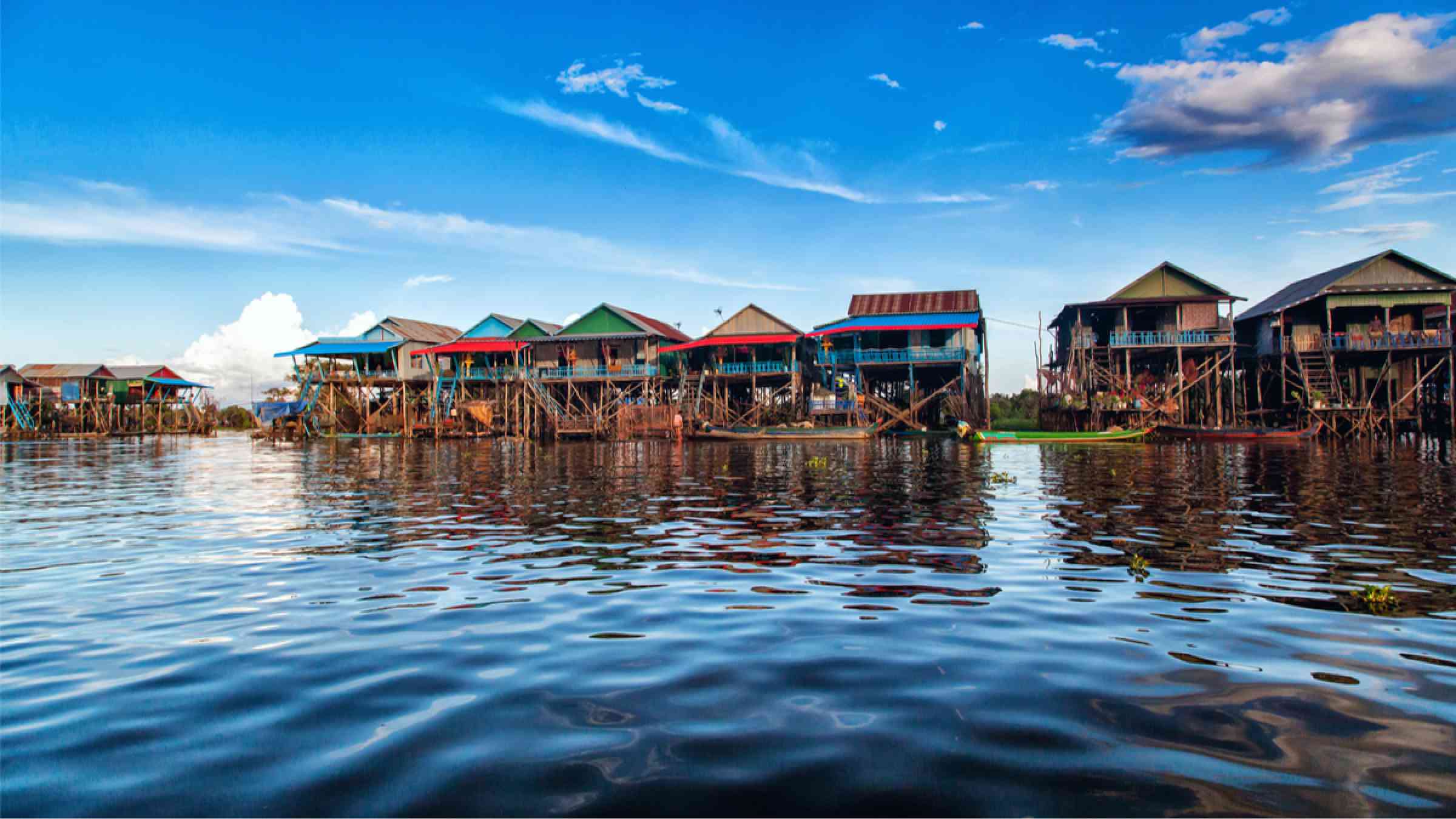Reducing flood vulnerability: Two examples from Asia

Cambodia: Climate adaptation on the shores of Southeast Asia’s largest lake
Improvements to drainage, flood protection, solid waste management, and community mobilization will help increase resilience for the 100,000 residents living around Tonle sap, southeast Asia’s largest freshwater lake.
Severe flooding and poor environmental sanitation are key infrastructure issues affecting the health and well-being of residents in Kampong Chhnang and Pursat.
The Kampong Chhnang and Pursat provinces, which border Cambodia’s Tonle Sap Lake, are introducing environmental infrastructure to improve sanitation and reduce vulnerability in the regions, which can expect to see increased flooding due to climate change.
As part of the ongoing Integrated Urban Environmental Management in the Tonle Sap Basin project, Kampong Chhnang and Pursat will increase flood protection through embankment construction and reinforcement, with sluice gate and drainage installation further strengthening efforts. These measures are expected to reduce the number of households affected by flooding in Kampong Chhnang by 80% and in Pursat by 50%.
Additionally, new solid waste collection and landfill management will improve sanitation in the two regions, and community resilience will be increased through climate change awareness campaigns and the introduction of early warning systems. Moving forward, the provision of similar decentralized urban services and resilient infrastructure may be replicated in other municipalities and urban areas within Cambodia.
The project is financed by ADB in conjunction with the Government of Cambodia.
Economic: Flood control components will decrease property damage and lessen agricultural and commercial losses in the region.
Health: Reduced flood risks and improved sanitation will decrease the prevalence of waterborne diseases, and the introduction of sidewalks and solar lamps will improve resident safety.
Bangladesh: Increasing resilience in rapidly growing cities
A $223 million development project in dhaka and Khulna will provide climate-resilient drainage systems, urban roads, and solid waste management to reduce flood vulnerability, increase mobility, and improve living conditions in the region.
Climate change impacts, including heavier rainfall and increased flooding, will stress existing drainage and stormwater management systems in Dhaka and Khulna.
The Second City Region Development Project will include the rehabilitation of 300 km of urban roads around Dhaka and Khulna, two rapidly growing cities. The inclusion of roadside drains and landscaping to absorb excess water will mitigate some damage from flooding, allowing residents to access public services in times of need.
Both Dhaka and Khulna are located in the vicinity of the world’s largest river delta, the Ganges Delta. Coupled with the fact that they are also close to sea level, both are particularly vulnerable to flooding. Improvements to 150 km of drainage systems, green slope protection, and enlarged retention reservoirs will increase flood resilience, with the flood inundation period expected to decrease by 30% during an average monsoon season.
A final element of the project focuses on solid waste management, with the construction of a composting plant and biogas production facilities in Khulna. Alongside a public awareness campaign about recycling, this approach seeks to reduce GHG emissions, decrease water pollution, and improve sanitation practices. The project is assisted by a $150 million ADB loan.
Economic: The drainage subproject will reduce flood damage, road maintenance costs, and earning losses during waterlogging periods.
Social: Improved roads will provide safer and more pedestrian-friendly traveling conditions, and will enable residents to better access health and education services.
Health: Better sanitation practices and enhanced solid waste management will lower the risk of waterborne diseases during times of flooding.
These two case studies were taken from the 100 Climate Actions from Cities in Asia and the Pacific publication (ADB, 2021).